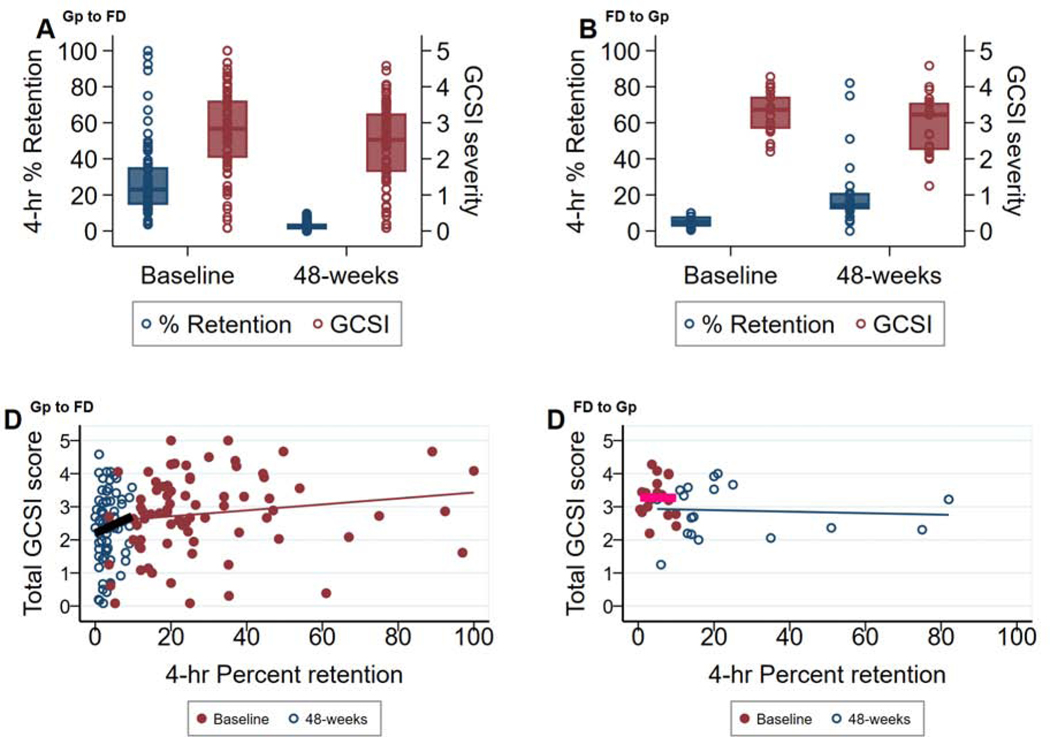Figure 2:
Three histologic biomarkers were analyzed over 3 subgroups, each with 9 non-diabetic patients’ samples per group: Controls, functional dyspepsia (FD) and normal emptying and gastroparesis (Gp). The biomarkers were determined using stained stomach tissue slides, with multiple counts per circular field under high-powered focus (hpf) per patient. The number of counts per patient varied by the histological biomarker and patient. Each figure displays individual patient’s mean count (dots) and the adjusted mean count per subgroup (horizontal line). P (2-sided) determined using a mixed multiple linear regression model regressing each patient’s biomarker counts on the 3-category subgroup, accounting for the repeated measures per patient.
Top - figure: (A) Interstitial Cells of Cajal (expressing c-Kit) in circular muscle showing decreased cell count numbers in FD and gastroparesis in a linear trend from controls (P≤.0001), with no difference seen between the two syndromes (B) CD206 (myenteric plexus) positive macrophage counts showing decreased numbers in both FD and gastroparesis (P≤.0009), with no difference seen between the two syndromes (C) Neuronal counts (as measured by Protein Gene Product 9.5 (PGP9.5) staining) in circular muscle showed no difference between any of the three groups (P=.39).
Bottom - image: Images of histological changes in control patients and patients with functional dyspepsia (FD) and idiopathic gastroparesis. (A): c-Kit (circular muscle) showing decreased immunoreactivity in FD and idiopathic gastroparesis (arrows (horizontal lines) indicate interstitial cells of Cajal (ICC) with slender bodies and 2–3 processes; arrowheads indicate mast cells with larger, rounded bodies and no processes. (B): CD206 staining of myenteric plexi showing decreased immunoreactivity in both FD and gastroparesis. (C): PGP9.5 staining for neurons. Images obtained at 20x magnification (scale=20 μm).

